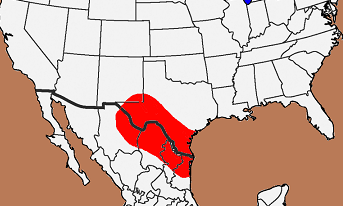
Identified By: John W. Greer
Named For: Landowner of Type Site
(Louis Arledge)
Date Identified: 1966
Type Site: Castle Canyon Site (41VV7), Val Verde County, Texas
Type identified in the MS thesis of James L. Dykman during research of the High Altitude Anasazi Lithic Assemblage in the Manti La Sal National Forest for BYU. This point has professional references and is considered a valid type.
Cluster:
Loyd Doty reports:
ARLEDGE (Straight Stem) – was named by archaeologist John W. Greer after Louis Arledge, the landowner of Castle Canyon archaeology site (41VV7), the type site on the Devils River, Val Verde County, Texas. Examples were also found in context at several other sites in Val Verde County. They are medium sized (2” to 2 ¾”) projectiles and knives with parallel blade edges, drooping barbs, straight stems and concave bases. Distribution is limited to Val Verde County only at present and they date to the San Felipe cultural portion of the Archaic Period. The Arledge point type is not widely recognized, and lacks sufficient examples with carbon dating to accurately date. They are rare enough to make it difficult to distinguish them as a distinct point type. Reference: Greer, John W. 1966a:14, 1966b:27, Results of Archaeological Excavations at the Castle Canyon Site Val Verde County, Texas. Southwestern Lore 32 (1), 10-18.

Greer reports the distribution of this type as being the same as the Langtry point. Most likely has a distribution of Val Verde County in Texas and into Coahuila, Nuevo Leon, and Tamaulipas Mexico.
Date: 3.500 - 2.500 B.P.
Cultural Period: Late Archaic
Glacial Period: Neoglacial
Culture:

